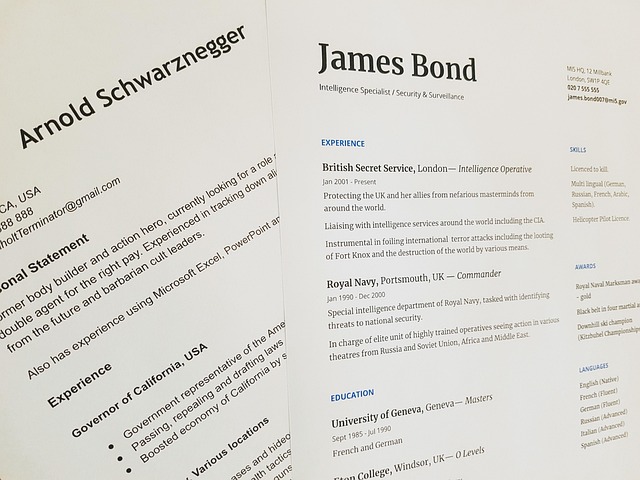Start Your Career in the US as a Medical Assistant
A medical assistant plays a key role in the healthcare system, handling both administrative and clinical tasks in settings such as hospitals, clinics, and private practices. Starting a career in this field offers a clear path for entering the medical profession, gaining hands-on experience, and contributing to patient care. This article explains what it takes to become a medical assistant in the US, including education options, certification paths, and essential skills. It also covers what to expect on the job and how to prepare for long-term growth in the healthcare industry.

What education is required for medical assistants?
The education and training for medical assistants typically involve completing a postsecondary program. Most medical assistants hold a certificate or diploma from an accredited medical assisting program, which can be completed in about one year. Some choose to pursue an associate degree, which takes approximately two years to complete. These programs are offered at community colleges, vocational schools, and technical institutes across the country.
Coursework in medical assisting programs covers a wide range of topics, including medical terminology, anatomy and physiology, pharmacology, and medical law and ethics. Students also receive hands-on training in clinical procedures, such as taking vital signs, administering injections, and assisting with minor medical procedures.
What are the certification options for medical assistants?
While certification is not always required by law, many employers prefer or require certified medical assistants. Certification demonstrates a level of competency and commitment to the profession. Several organizations offer certification for medical assistants in the US, including:
-
Certified Medical Assistant (CMA) from the American Association of Medical Assistants (AAMA)
-
Registered Medical Assistant (RMA) from American Medical Technologists (AMT)
-
National Certified Medical Assistant (NCMA) from the National Center for Competency Testing (NCCT)
-
Certified Clinical Medical Assistant (CCMA) from the National Healthcareer Association (NHA)
Each certification has its own eligibility requirements and exam process. Most require completion of an accredited medical assisting program and passing a comprehensive exam.
What essential skills are needed for entry-level healthcare roles?
To succeed as a medical assistant, you’ll need a combination of clinical and administrative skills. Some essential skills for entry-level healthcare roles, particularly for medical assistants, include:
-
Communication: Clear and empathetic communication with patients, healthcare providers, and colleagues is crucial.
-
Attention to detail: Accuracy in recording patient information and following medical procedures is essential.
-
Multitasking: The ability to juggle multiple responsibilities efficiently is key in fast-paced healthcare environments.
-
Technical proficiency: Familiarity with electronic health records (EHR) systems and basic medical equipment is important.
-
Adaptability: Healthcare is an ever-evolving field, so being open to learning new techniques and technologies is vital.
-
Emotional stability: Dealing with patients in various states of health requires emotional resilience and professionalism.
What are the daily responsibilities in outpatient and hospital settings?
Medical assistants’ daily responsibilities can vary depending on their work setting, but generally include a mix of clinical and administrative duties in healthcare. In outpatient settings such as clinics or physicians’ offices, medical assistants might:
-
Schedule appointments and manage patient records
-
Take and record vital signs
-
Prepare patients for examinations
-
Assist physicians during exams
-
Perform basic laboratory tests
-
Administer medications as directed by physicians
In hospital settings, medical assistants may have more specialized roles, such as:
-
Working in specific departments (e.g., cardiology, pediatrics)
-
Assisting with pre- and post-operative care
-
Monitoring and recording patient progress
-
Preparing patients for various diagnostic procedures
-
Collaborating with a wider range of healthcare professionals
How much does medical assistant training cost?
The cost of medical assistant training can vary significantly depending on the type of program and institution. Here’s a general overview of potential costs:
| Program Type | Duration | Estimated Cost Range |
|---|---|---|
| Certificate/Diploma | 9-12 months | $1,200 - $15,000 |
| Associate Degree | 18-24 months | $10,000 - $30,000 |
| Online Certificate | 4-12 months | $1,000 - $5,000 |
Prices, rates, or cost estimates mentioned in this article are based on the latest available information but may change over time. Independent research is advised before making financial decisions.
These costs typically include tuition, books, and supplies. Some programs may have additional fees for lab work, uniforms, or certification exam preparation. It’s important to consider that many schools offer financial aid options, scholarships, or payment plans to help manage these costs.
What are the career prospects for medical assistants?
The career outlook for medical assistants in the United States is promising. According to the Bureau of Labor Statistics, employment of medical assistants is projected to grow 16% from 2021 to 2031, much faster than the average for all occupations. This growth is driven by an aging population and an increased demand for preventive medical services.
Medical assisting can serve as a stepping stone to other healthcare careers. With additional education and training, medical assistants can advance to roles such as nursing, healthcare administration, or medical coding and billing specialists. Some may choose to specialize in areas like ophthalmology, podiatry, or cardiology, which can lead to higher salaries and more specialized roles.
Starting your career as a medical assistant in the US offers a rewarding pathway into the healthcare industry. With relatively short training periods, multiple certification options, and a strong job outlook, it’s an excellent choice for those looking to make a difference in patients’ lives while building a stable and potentially expansive career in healthcare.
This article is for informational purposes only and should not be considered medical advice. Please consult a qualified healthcare professional for personalized guidance and treatment.




